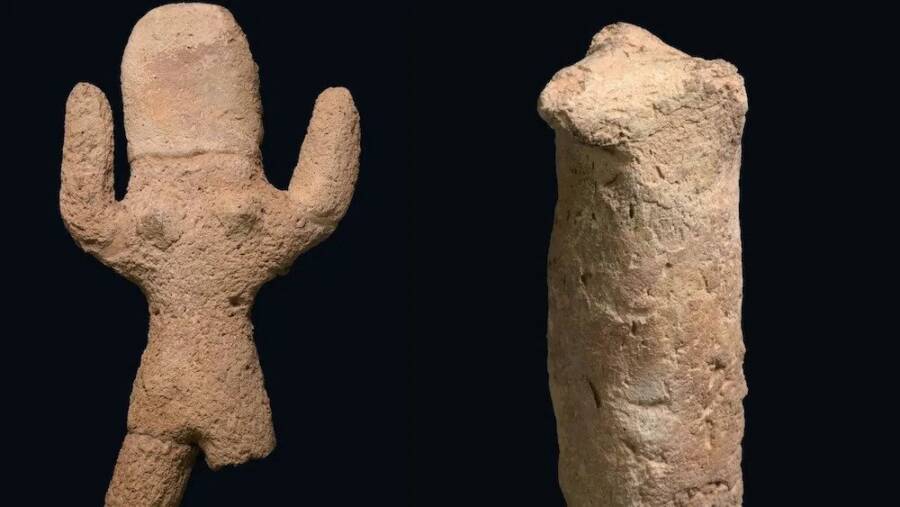The artifacts found in Eilat, Israel, include the figurine of a woman, incense altars, and ceremonial rattles.

Clara Amit, Israel Antiquities AuthorityThe artifacts include a figurine of a woman, left, and an animal, right.
In 1990, a resident of Eilat in southern Israel came across a number of clay artifacts. Now, researchers have determined that these items were likely once viewed as “magical” objects which offered protection to pilgrims making their way to the holy city of Mecca.
“This is the first time that such a large assemblage of ritual objects of this kind has been found, and it is even more unique at a temporary site and not a permanent settlement,” researchers noted of the find in a release about their study, which recently published in the Journal of Material Cultures in the Muslim World.
The 400-year-old items, which appear to have originated in Egypt, were found along a former pilgrimage route that connected Cairo to Mecca. They include a figurine of a woman, possibly a goddess, with raised arms; round rattles filled with small stones, which would have been used in ceremonies; votive incense altars; animal figurines; pebbles; and seashells.

Clara Amit, Israel Antiquities AuthorityThis altar would have been used to burn incense.
According to the Israel Antiquities Authority (IAA), the artifacts were likely viewed as “magic” and would have been used in ceremonial rituals meant to heal diseases and ward off the evil eye. The artifacts were found broken, and may have been “purposely broken in the ceremonies.”
“This discovery reveals that people in the Early Ottoman Period — just as today — consulted popular sorcerers alongside the formal belief in the official religion,” the researchers explained. “There was a demand for magical rituals among people from different strands of society.”
As the Jerusalem Post reports, the location of these items offers a fascinating perspective on how ancient pilgrims navigated the route to Mecca, a journey known as hajj.
They were discovered along a route called Darb al-Hajj, or “Pilgrimage Road,” that started in Cairo, traversed the Sinai Peninsula, passed through Eilat and the town of Aqaba, and finished in Mecca. The route was used from the 7th century C.E. until the 19th century C.E., and appears to have been particularly popular starting in the 13th and 14th centuries C.E.
Along the way, pilgrims seemingly did what they could to keep safe — including consulting sorcerers who conducted magical rituals.
“The find-spot of these artifacts next to the camping site, and the comparison of the artifacts to those known in the Muslim world, as well as the fact that these artifacts were found together as a group, lead to the understanding that they were used in magical rituals,” the researchers said.
“Such rituals were carried out daily alongside the formal religious rituals — including in the Muslim world,” they continued. “It is probable that the pilgrims making their way to the holy cities of Mecca and Medina were no exception.”

Uzi Avner/Dead Sea-Arava Science CenterA portion of the pilgrimage route that cut through Eilat in Israel, and where the clay artifacts were discovered.
The “magical” clay artifacts discovered in Eilat thirty years ago are just one small part of the larger history of Darb al-Hajj, and the IAA and Israel’s Ministry of Tourism are determined to preserve and protect the area.
As the Jerusalem Post reports, the IAA will oversee the development of the area and is planning on organizing education events for the public.
After reading about the “magical” artifacts found along an ancient pilgrimage route to Mecca, go inside the discovery of the ancient “swearing bowls” that were meant to repel demons. Or, see how a diver in Israel came across a sword from the Crusades at the bottom of the Mediterranean Sea.





